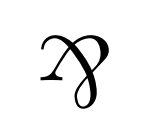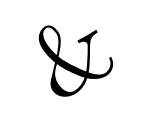Linear logic uses an unusual symbol, an ampersand rotated 180 degrees, for multiplicative disjunction.

The symbol is U+214B in Unicode.
I was looking into how to produce this character in LaTeX when I found that the package cmll has two commands that produce this character, one semantic and one descriptive: \parr and \invamp [1].
This got me to wondering how you might create a symbol like the one above if there wasn’t one built into a package. You can do that by using the graphicx package and the \rotatebox command. Here’s how you could roll your own par operator:
\rotatebox[origin=c]{180}{\&}
There’s a backslash in front of the & because it’s a special character in LaTeX. If you wanted to rotate a K, for example, there would be no need for a backslash.
The \rotatebox command can rotate any number of degrees, and so you could rotate an ampersand 30° with
\rotatebox[origin=c]{30}{\&}
to produce a tilted ampersand.

Related posts
[1] The name \parr comes from the fact that the operator is sometimes pronounced “par” in linear logic. (It’s not simply \par because LaTeX already has a command \par for inserting a paragraph break.)
The name \invamp is short for “inverse ampersand.” Note however that the symbol is not an inverted ampersand in the sense of being a reflection; it is an ampersand rotated 180°.

Thank you for this good post. You and readers of this post will like the handout I made based on it for my 7th graders :
https://www.rasmusen.org/special/Cedars_School/03.03_Latex_rotating_symbols.pdf
They had great fun with this. I started by showing them the output from a command with 45 and 90 and asked them what they thought would happen if I replaced it with 180, 270, 0, 360, 720. Then we tried replacing center=c with l and r.